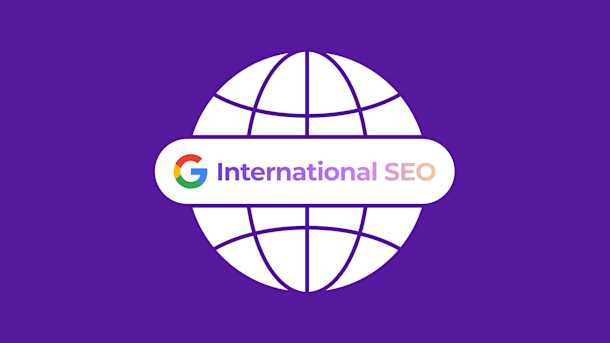Building organic traffic from different countries requires an international search engine optimization (SEO) strategy. These strategies are most successful when built on high-quality content in a country’s most popular language. Although it doesn’t necessarily focus on translation, international SEO does involve targeting new markets with content and often requires localization and translation work to be most effective.
In this article, we’ll explain how to target markets across borders using international SEO, with or without additional translations.
What is international SEO?
International SEO is the practice of optimizing your website so that search engines like Google can easily understand which countries will find its content valuable. This involves building a strategy with country-specific keyword research, localized content, and technical updates.
Take Zara, a well-known international clothing brand, for example. It has over 100 subdomains dedicated to different countries, two of which are written in English and target the United States and the United Kingdom.
Zara’s UK subdomain ranks for keywords like “crochet top dress” on google.co.uk search engine results pages. If you were to click this search result in the UK, you’d find yourself on a page on the domain www.zara.com/uk.
 Search results for “crochet top dress” (Source: Google UK)
Search results for “crochet top dress” (Source: Google UK)
To successfully build versions of your site for another country, you’ll need to incorporate local keywords into your URL structures, metadata, and specific content pages and adjust your site’s code. You’ll also need to attract backlinks from high-authority sites in the UK to build your rank there.
Challenges in building an international SEO strategy
International SEO is trickiest when you’re targeting a country that primarily speaks another language. To correctly execute all the moving parts of your strategy, you’ll need to conduct keyword research, create content, and attract backlinks in that local language.
Some of the biggest challenges you’ll face stem from language barriers. These include:
- Identifying relevant keywords in a country’s most popular language
- Making sure your content is culturally appropriate, not just translated word-for-word
- Using local slang correctly and removing slang that was present in the source text
- Choosing images that fit cultural norms and expectations
- Including statistics, research, and examples that are relevant to the target audience
Keep in mind that some common challenges—like making the right technical choices about your site’s domain structure or knowing where your content delivery network is located—aren’t necessarily language-related.
3 steps to create an impactful international SEO strategy
You should always work with experts who live in your target country and speak the language natively to build a successful international SEO strategy. They’ll have the necessary context to conduct keyword research and create content for that market. Let’s look at three steps you can take to build your international SEO strategy:
1. Perform keyword research
The first step in optimizing a website for search in another country is to find out what keywords international audiences are searching for. SEO tools make this simple, but you can also use other resources like Google Search Console (GSC) or Google Trends.
To start, install GSC on your website. You can use GSC to see your audience’s keywords when they find your site from different countries. Use this list as a foundation for your keyword research.
If you're starting from scratch, you can also visit a competitor’s site to find keywords. For example, Coinbase has subfolders of its coinbase.com domain to target cryptocurrency buyers and sellers in other countries, like www.coinbase.com/pl in Poland or www.coinbase.com/it in Italy. Looking through this content could help you discover seed keywords related to the cryptocurrency market in Poland or Italy.
 Coinbase’s Italian homepage (Source)
Coinbase’s Italian homepage (Source)
The “Learn” section of Coinbase’s website houses some terms that might kickstart your research, such as:
- Acquistare criptovalute, meaning “Buy cryptocurrencies”
- Guida NFT, meaning “NFT guide”
- Configurare portafoglio cripto, meaning “Set up crypto wallet”
- Criptovalute e tassazione, meaning “Cryptocurrency taxes”
- Investire in Bitcoin, meaning “Invest in Bitcoin”
Search for each of your seed keywords individually and use Google’s autocomplete suggestions and related searches to generate even more keyword ideas.
 A Google search for acquistare criptovalute (Source: Google Italy)
A Google search for acquistare criptovalute (Source: Google Italy)
Finally, you can evaluate each keyword’s popularity or value using Google Trends, which displays data on search volume in specific locations over time.
 A Google Trends search for acquistare criptovalute (Source: Google Trends)
A Google Trends search for acquistare criptovalute (Source: Google Trends)
Working with a native-speaking linguist or local SEO specialist will greatly improve your chances of identifying keywords that resonate with a given audience.
2. Localize your content
Whether or not you’re translating your website’s content into another language, you’ll need to localize it in order to rank successfully in other countries.
Localizing your content involves taking cultural differences into account and adapting content to include local preferences, statistics, examples, and more. For example, Nike’s blog has a section that spotlights notable athletes. Its French blog spotlights athletes like Alexis Hanquinquant, whereas it features Megan Rapinoe, a US soccer player, on its US domain.
 Nike’s French blog (Source)
Nike’s French blog (Source)
This example shows how you might completely change a piece of content to rank internationally, but that won’t always be the case.
Here’s a list of elements to look for when adapting your current content for international markets:
- Clothing sizing or fit
- Date formats, like MM-DD-YYYY in the US and DD-MM-YYYY in Europe
- Time formats, like 12-hour and 24-hour times, or time zones
- Seasons, like winter and summer in different hemispheres
- Different countries’ currencies
- Payment methods
- Individual dialects within a target language
- Local idioms, expressions, metaphors, jokes, or slang terms
- Measurements, like the metric system and the imperial system
- Locally relevant models and settings in images and videos
- Symbols, icons, and gestures in images
- Text direction, like right-to-left, left-to-right, or vertical
- Research and statistics
If you’ve done this correctly, you’ll be equipped with content that’s optimized based on your keyword research and is of a high enough quality to attract backlinks from local sites.
3. Build links
Building links from websites with high authority in a given country will increase your potential to quickly rank for local keywords. To attract backlinks naturally, focus on creating original content with your target market in mind, like publishing local research or covering local events.
Technical international SEO best practices
International SEO requires some technical work on your website, too. You’ll need to decide how to structure your domain and implement new on-site code, as well as consider site speed across borders.
Let’s look at some of the most critical technical best practices:
Region-specific URLs
A localized URL can signal to your audience that a website provides a more effective user experience for them. There are several options to accomplish this:
- Country code top-level domains (www.yourwebsite.es): These URLs are most useful when you can manage a local web server, but they can be expensive and may limit your targeting to a single country.
- Subdomains with a generic top-level domain (www.es.yourwebsite.com): These are easy to set up and work for websites hosted on servers in multiple locations, but it isn’t very clear to search engines whether a domain prioritizes a specific country or language.
- Subdirectories or subfolders (www.yourwebsite.com/es/): Subdirectories are easy to set up and require little maintenance, but the location might not always be clear from the URL.
If you’re just getting started with localization, you might want to start with a subfolder and migrate to a dedicated subdomain or country-specific domain later. ePlaneAI, for example, uses subfolders to manage its sites in Spain, Russia, Australia, France, Germany, and more.
 ePlan AI’s Spanish homepage (Source)
ePlan AI’s Spanish homepage (Source)
ePlaneAI’s team also used Smartling’s Global Delivery Network to translate its site’s content in only 15-30 minutes, saving its team over 2,800 hours of engineering work.
Hreflang tags
Each translated page will need a hreflang tag within its code. That may sound technical, but hreflangs are simply snippets of code that let search engines know which languages or regions a given page is targeting.
Hreflang tags targeting Chinese and Japanese speakers might look like this, respectively:

Let’s break down each of the components of these tags:
- link rel=”alternate” indicates alternative language versions of the webpage.
- href="https://es.example.com/page" includes the URL in the target language or region.
- hreflang="ch" specifies the language or region (in this case, China).
Don’t confuse hreflang tags with canonical tags, which you might still use in your translated content to differentiate pages in the same language. Hreflang tags instead distinguish between pages in different languages.
Website speed in specific countries
Site speed significantly impacts your SEO rank in any language or country. For example, 47% of consumers want websites to load in less than two seconds.
You’ll want to make sure your site loads quickly in your target countries by considering the following:
- Using a content delivery network to host content in local countries
- Compressing images, videos, and graphics to reduce page size
- Implementing a caching policy in compliance with local regulations
Each of these technical best practices will help you ensure that international audiences will easily find the content you’ll work so hard to localize.
Creating high-quality content consistently across multiple countries
If you’re going to consistently rank well for your target keywords internationally, you’ll need to build a localization machine that’s fast, produces high-quality content, and is easy to scale.
Working with a translation partner will allow you to integrate language services and technology into your current workflow and ensure that you create valuable SEO content every time you complete a translation.
Let’s discover how to find that partner:
1. Analyze your tech stack
Content translation that occurs outside your current content creation processes will create much more work for your team. Consider your current tech stack, including development platforms, content management systems, marketing automation systems, customer service platforms, internal knowledge bases, and anywhere else that might house content that you must translate to serve your SEO efforts.
You’ll want to find a translation management system (TMS) that integrates with your tech stack directly so that internal teams can continue to use the systems they’re comfortable with while still employing more efficient translation processes.
Smartling integrates with over 40 well-known systems, such as Salesforce, HubSpot, WordPress, Github, and many more, to make it easy for teams to collaborate when translating and approving content.
2. Build your workflow
Next, you want to define your ideal workflow. For example, using Smartling’s TMS, you can use one centralized system to determine when and how people must collaborate to successfully translate and launch internationally relevant content.
For example, Lyft worked with Smartling using its Contentful integration. This allowed Lyft to set up automated workflows for all of its content types, eliminating much of its team’s manual work.
 Lyft’s TMS workflow from Smartling (Source)
Lyft’s TMS workflow from Smartling (Source)
3. Decide how to translate your content
There are many ways to translate content. You can use machines, humans, or a combination of the two, but your choice will likely depend on your needs. For example:
- AI tools like Smartling Translate easily translate straightforward content, like a technical manual.
- Content that’s nuanced or critical to your business, like a homepage, might require a professional linguist’s translation services.
- For higher volume projects that include a mix of both content types, like translating an entire website, consider tools like Smartling’s AI-Powered Human Translation (AIHT), which provides the best of both worlds.
AIHT is the ideal way to maintain high-quality translation while decreasing translation costs and time to publish at scale.
4. Optimize your process
As you localize content, you’ll learn how you want to translate certain terms. To maintain consistency across all your content, you should use a TMS that houses this information in glossaries and style guides and leverages translation memory to store approved translations for re-use to ensure consistency across your translated content.
Make your international SEO successful with Smartling
To create an effective SEO strategy on a global scale, you need to work with someone who understands your international target audience's language and cultural norms.
Smartling provides best-in-class translations at incredible speed and provides integrations with many common programs. Plus, our TMS was rated the #1 pick for enterprise translation management on G2 for over 17 quarters in a row.
Book a meeting with us today to discover how we can help you create a winning international SEO strategy.






